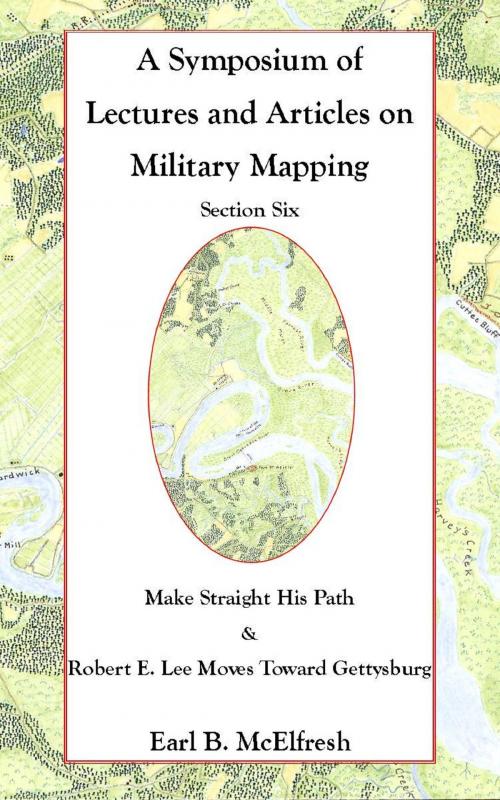A Symposium of Lectures and Articles on Military Mapping Section Six: Make Straight His Path: Maps and Topography in the Civil War & Military Mapping: Robert E. Lee Moves to Gettysburg
Nonfiction, History, Americas| Author: | Earl B. McElfresh | ISBN: | 9781885294487 |
| Publisher: | Earl B. McElfresh | Publication: | September 11, 2013 |
| Imprint: | Smashwords Edition | Language: | English |
| Author: | Earl B. McElfresh |
| ISBN: | 9781885294487 |
| Publisher: | Earl B. McElfresh |
| Publication: | September 11, 2013 |
| Imprint: | Smashwords Edition |
| Language: | English |
Military maps are not like civilian road maps which merely outline a transportation network. Military maps encompass a complete inventory of the topography of the geographic areas an army might march through or fight over. An army without detailed accurate maps is like a person walking blindfolded over particularly rugged terrain and in danger of starving—especially in the mid-19th century America, which was sparsely settled and often wilderness. Maps were critical to the success and well-being of armies.
The two articles in this symposium describe in great detail how maps were prepared, used and what effect maps, or lack of maps, had on Civil War campaigns and battles. Of special interest is the negative effects the lack of maps had on Robert E. Lee’s campaign.
Military maps are not like civilian road maps which merely outline a transportation network. Military maps encompass a complete inventory of the topography of the geographic areas an army might march through or fight over. An army without detailed accurate maps is like a person walking blindfolded over particularly rugged terrain and in danger of starving—especially in the mid-19th century America, which was sparsely settled and often wilderness. Maps were critical to the success and well-being of armies.
The two articles in this symposium describe in great detail how maps were prepared, used and what effect maps, or lack of maps, had on Civil War campaigns and battles. Of special interest is the negative effects the lack of maps had on Robert E. Lee’s campaign.















